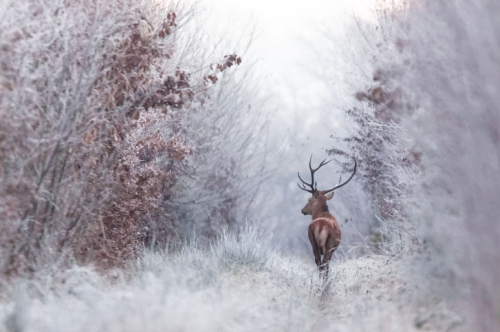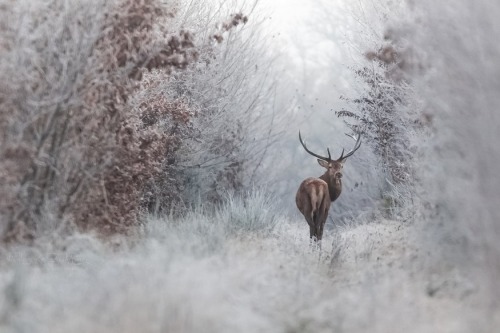Spinatlasagne-blog - Spinatlasagne

More Posts from Spinatlasagne-blog and Others
Spontaneous 'dust traps:' Astronomers discover a missing link in planet formation
Planets are thought to form in the disks of dust and gas found around young stars. But astronomers have struggled to assemble a complete theory of their origin that explains how the initial dust develops into planetary systems. A French-UK-Australian team now think they have the answer, with their simulations showing the formation of ‘dust traps’ where pebble-sized fragments collect and stick together, to grow into the building blocks of planets. They publish their results in Monthly Notices of the Royal Astronomical Society.

Our Solar system, and other planetary systems, began life with disks of gas and dust grains around a young star. The processes that convert these tiny grains, each a few millionths of a metre (a micron) across, into aggregates a few centimetres in size, and the mechanism for making kilometre-sized 'planetesimals’ into planetary cores, are both well understood.
Keep reading







harkonnen ornithopter sketches inspired by artofthera https://www.artstation.com/artwork/QWOJr





“Faerie Winter” by Nicolas Le Boulanger

ART: “Cargo X3″ by William Nunez


Rolling Skies

(sources)

A Visualisation of the Recent Rapid Change in Temperature.
(GreenPeace)
Solar System: Things to Know This Week
Celebrate with us as our Opportunity rover turns 13, view art from our fans and more!
1. All Grown Up
After exceeding her 90-day mission and design parameters many times over, our plucky little rover Opportunity turns 13 years old on the Red Planet. She’s officially a teenager!
2. People’s Space

The public contributes so much wonderful art that we decided to make a place to share it. Enjoy!
3. Ready for a Close Up

Our Juno spacecraft recently got a closer look at Jupiter’s Little Red Spot. The craft’s JunoCam imager snapped this shot of Jupiter’s northern latitudes on December 2016, as the spacecraft performed a close flyby of the gas giant. The spacecraft was at an altitude of 10,300 miles above Jupiter’s cloud tops.
4. A New Test for Life on Other Planets

A simple chemistry method could vastly enhance how scientists search for signs of life on other planets. The test uses a liquid-based technique known as capillary electrophoresis to separate a mixture of organic molecules into its components. It was designed specifically to analyze for amino acids, the structural building blocks of all life on Earth.
5. Blurring the Line Between Asteroid and Comet

Our NEOWISE mission recently discovered some celestial objects traveling through our neighborhood, including one on the blurry line between asteroid and comet. An object called 2016 WF9 was detected by the NEOWISE project in November 2016 and it’s in an orbit that takes it on a scenic tour of our solar system. A different object, discovered by NEOWISE a month earlier, is more clearly a comet, releasing dust as it nears the sun.
Discover the full list of 10 things to know about our solar system this week HERE.
Make sure to follow us on Tumblr for your regular dose of space: http://nasa.tumblr.com

ART: “Hangar 8″ by Albert Ramon Puig
-
 i2obotdowneyji2-blog liked this · 8 years ago
i2obotdowneyji2-blog liked this · 8 years ago -
 the-violet-galaxy reblogged this · 8 years ago
the-violet-galaxy reblogged this · 8 years ago -
 veg-biry-ani liked this · 8 years ago
veg-biry-ani liked this · 8 years ago -
 veg-biry-ani reblogged this · 8 years ago
veg-biry-ani reblogged this · 8 years ago -
 agentsmith2015 liked this · 8 years ago
agentsmith2015 liked this · 8 years ago -
 moonshotstudios liked this · 8 years ago
moonshotstudios liked this · 8 years ago -
 nieraldo reblogged this · 8 years ago
nieraldo reblogged this · 8 years ago -
 nieraldo liked this · 8 years ago
nieraldo liked this · 8 years ago -
 gemeinsam-sind-wir-stark liked this · 8 years ago
gemeinsam-sind-wir-stark liked this · 8 years ago -
 bringthethunder reblogged this · 8 years ago
bringthethunder reblogged this · 8 years ago -
 cowboy-catboy liked this · 8 years ago
cowboy-catboy liked this · 8 years ago -
 asphyxiem reblogged this · 8 years ago
asphyxiem reblogged this · 8 years ago -
 cyberpunk-dystopia-vision reblogged this · 8 years ago
cyberpunk-dystopia-vision reblogged this · 8 years ago -
 disrupt-the-static reblogged this · 8 years ago
disrupt-the-static reblogged this · 8 years ago -
 vincentvanghoul666-blog liked this · 8 years ago
vincentvanghoul666-blog liked this · 8 years ago -
 cheddardude73-blog liked this · 8 years ago
cheddardude73-blog liked this · 8 years ago -
 thephantomlaine reblogged this · 8 years ago
thephantomlaine reblogged this · 8 years ago -
 closetedgaymer-blog liked this · 8 years ago
closetedgaymer-blog liked this · 8 years ago -
 futureovercast reblogged this · 8 years ago
futureovercast reblogged this · 8 years ago -
 bloodyroserenegade liked this · 8 years ago
bloodyroserenegade liked this · 8 years ago -
 morbat52 liked this · 8 years ago
morbat52 liked this · 8 years ago -
 worm-mommy liked this · 8 years ago
worm-mommy liked this · 8 years ago -
 orbitalobserver liked this · 8 years ago
orbitalobserver liked this · 8 years ago -
 spinatlasagne-blog reblogged this · 8 years ago
spinatlasagne-blog reblogged this · 8 years ago -
 cycm reblogged this · 8 years ago
cycm reblogged this · 8 years ago -
 cycm liked this · 8 years ago
cycm liked this · 8 years ago -
 redwave liked this · 8 years ago
redwave liked this · 8 years ago -
 zootechnik reblogged this · 8 years ago
zootechnik reblogged this · 8 years ago -
 zootechnik liked this · 8 years ago
zootechnik liked this · 8 years ago -
 sentry-34 reblogged this · 8 years ago
sentry-34 reblogged this · 8 years ago -
 sentry-34 liked this · 8 years ago
sentry-34 liked this · 8 years ago -
 coonazz74 liked this · 8 years ago
coonazz74 liked this · 8 years ago -
 corpusbonds reblogged this · 8 years ago
corpusbonds reblogged this · 8 years ago -
 thephantomlaine liked this · 8 years ago
thephantomlaine liked this · 8 years ago -
 realapocalypse reblogged this · 8 years ago
realapocalypse reblogged this · 8 years ago -
 araxxor1 liked this · 8 years ago
araxxor1 liked this · 8 years ago -
 ycfskyline reblogged this · 8 years ago
ycfskyline reblogged this · 8 years ago -
 cgshorts liked this · 8 years ago
cgshorts liked this · 8 years ago -
 the-binary-tomorrow liked this · 8 years ago
the-binary-tomorrow liked this · 8 years ago -
 shiroi-karasu liked this · 8 years ago
shiroi-karasu liked this · 8 years ago -
 majikalconcepts liked this · 8 years ago
majikalconcepts liked this · 8 years ago -
 the-ultrafox reblogged this · 8 years ago
the-ultrafox reblogged this · 8 years ago -
 zamirobi liked this · 8 years ago
zamirobi liked this · 8 years ago -
 pandashaman liked this · 8 years ago
pandashaman liked this · 8 years ago -
 trogon liked this · 8 years ago
trogon liked this · 8 years ago